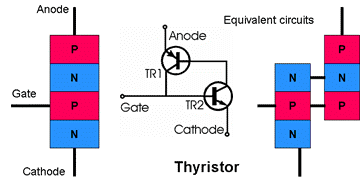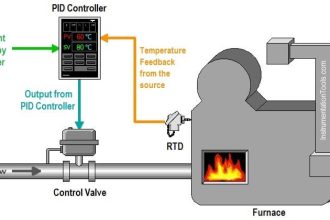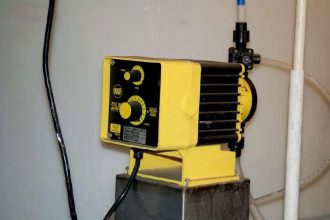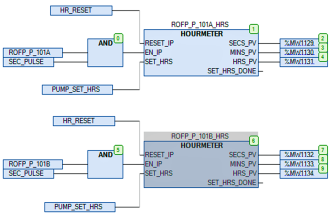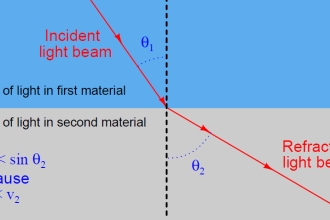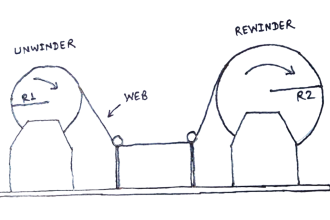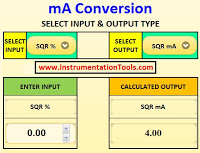Auto-transformer Advantages:
- Auto-transformers in comparison with the double winding transformers are generally advantageous of the voltage ratio is favorable from the point of view of the equivalent size
- The reduction in the equivalent power in relation to the throughput, reduction in the weight and size, reduction in the no load (iron losses) and on load losses (cooper losses), the reduction in the no load current and the short circuit impedance
- If P is the power of the transformer, linear dimensions of the auto transformer vary as P0.25 and the weight and volume vary as P0.75 thus reducing the losses and weight of the transformer
- The short circuit impedance of the auto-transformer goes down with equivalent rating which is advantageous because of the lower voltage drop and better regulation.
- For connections between the two systems at very high voltage, where the power is to be transmitted in the order of GVA (Giga Volt-amperes), the use of auto transformer make it possible for high power equipment and can be easily transportable. This will not be possible with normal transformers
Auto-transformer Disadvantages:
- An electrical connection between the primary and secondary is not always desirable, particularly when the voltages levels on both the sides of transformer are quite different. If the neutral point is not solidly earthed, the lower voltage side can be subjected to high potential in the event of earth fault on high voltage side. In general practice, auto transformers are only used on distribution systems where the neutral is connected to the earth
- Auto-transformers are particularly sensitive to the atmospheric over-voltages. Therefore the auto-transformer requires much highs standard of insulation compared to normal transformer. Surge Arrester protection is required
- As the short circuit impendace values of the auto-transformer are low, short circuit currents can reach higher critical values.
Dry Type Transformers Advantages
Advantages of Dry Type Transformers:
- Dry type transformers have no risk of fire
- Dry type transformers are lighter in weight compared to oil filled transformers
- It requires less floor area to accommodate
- No toxicity unlike synthetic liquid filled transformers
- Dry type transformers are have efficient noiseless operation
- Reduced installation cost
- They are Maintenance free
Type of dry type transformers:
- Cast resin type
- Resin Impregnated type
What are the different losses of Transformer?
Transformer has two types of losses 1. Iron losses 2. Copper losses
Iron losses or core losses: Iron losses are the no load losses in transformer. This losses remain unchanged at any load of the transformer. Iron losses are categorized as Hysteresis loss and Eddy current loss.
Copper loss: This loss is due to the I2R loss in the windings of the transformer. This is a variable loss varies with the load on the transformer.
Other losses include stray load losses and dielectric losses.
If supply frequency f transformer is made double keeping voltage unchanged what happens?
Hysteresis loss will decrease and eddy current loss remains unchanged.
Transformer works on which principle?
Electrical Transformer works on Faraday’s law of electromagnetic induction. In electrical transformer the emf induced will be of Stationary Induced EMF. In stationary induced emf, emf will be induced in such a manner that the electrical conductors (windings) are kept stationary and magnetic field is varied ( varying magnetic field in transformer core) results in production of induced emf.
Why efficiency of transformer is high?
Electrical transformer is a static device which transfers the power from one circuit to other through electromagnetic induction. In electrical transformer as there are no moving parts, no friction and windage losses occur and other losses in transformer are less as magnetic path of a transformer is a closed loop ( no air gap exist like induction motor between two circuits). Losses in the transformer are very less compared to any other rotating machine, hence efficiency of transformers will be very high. Efficiency will be of the order of 95% to 98%.
What is the emf equation of transformer?
emf equation of transformer E = 4.44*f*N*φmax volts
f = applied frequency of voltage wave
N = Number of turns on primary or secondary winding.
φmax = Maximum flux ( φmax = Bmax x A)
Bmax = Maximum flux density
A = Area of cross section of the core.
What is the Ideal transformer?
Answer: Transformer which has characteristics such as no winding resistance, no magnetic leakage, no iron loss or core loss ( hysteresis and eddy current loss), and zero magnetising current is termed as Ideal Transformer. Ideal transformer is assumed for better explanation and understanding of practical transformer.
What is the Significance of voltage per turn?
Answer: Voltage per turn for primary winding side and secondary winding side of the transformer is same. This helps in explaining that primary and secondary of transformers are related to each other by turns ratio (K).
( V1/N1) = ( V2/N2) = K (turns ratio).
(V2/V1) = (E2/E1) = (N2/N1) =K
Maximum efficiency of Transformer Condition
Maximum efficiency of Transformer:
Condition for maximum efficiency of transformer can be obtained by differentiating the efficiency equation of the transformer with respect to the load factor (dη/dα).
where η is the efficiency of the transformer
α is the load factor = (operating load of transformer/ full load of transformer)
By solving the equations it will be obtained such that Maximum efficiency of transformer is at
P core loss = α2 x P copper loss
From the above equation it can be defined as the maximum efficiency of the transformer occurs at a load factor (α) at which the iron losses is equal to copper losses.
The efficiency of the transformer changes with the load ( load factor). The efficiency of the transformer will be maximum at certain load when the copper losses ( α2 x P copper loss) is equal to the core losses (P core loss) i.e, maximum efficiency of the transformer will be attained when the copper losses at particular load should be equal to the no load losses (core losses are called no load losses and remain constant with the change in load).
Power and Distribution Transformer:
While designing transformer this average load factor (α) for a transformer is estimated from the load demand charts/curves.Power transformer in power plants and in substations operate at full load, therefore the load factor for power transformer is designed at 0.8. Means the power transformer is designed to have maximum efficiency at full load. Load on Distribution transformer varies during the day, therefore the load factor of the distribution transformer is designed as 0.5. Thus distribution transformer will have maximum efficiency at 50% of the full load.
Thus maximum efficiencies of the transformer are determined based on the type of operation it perform.

